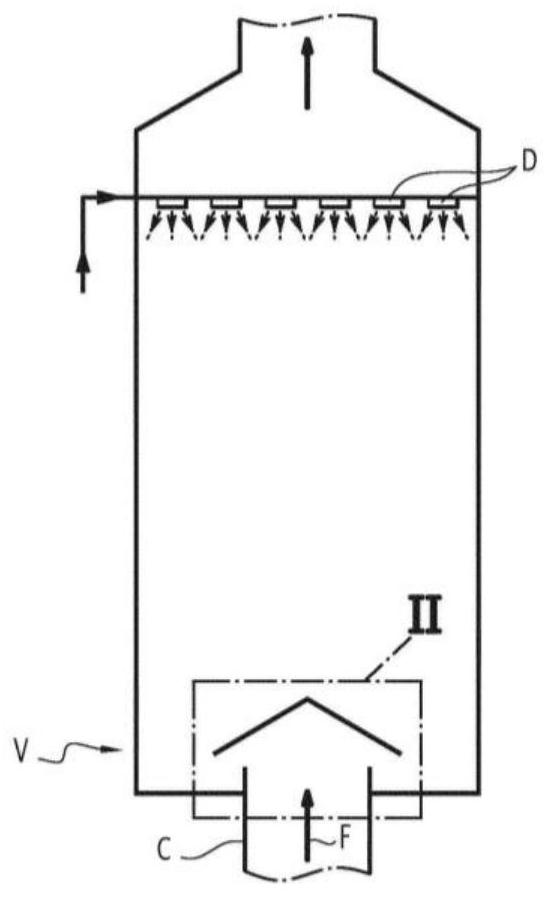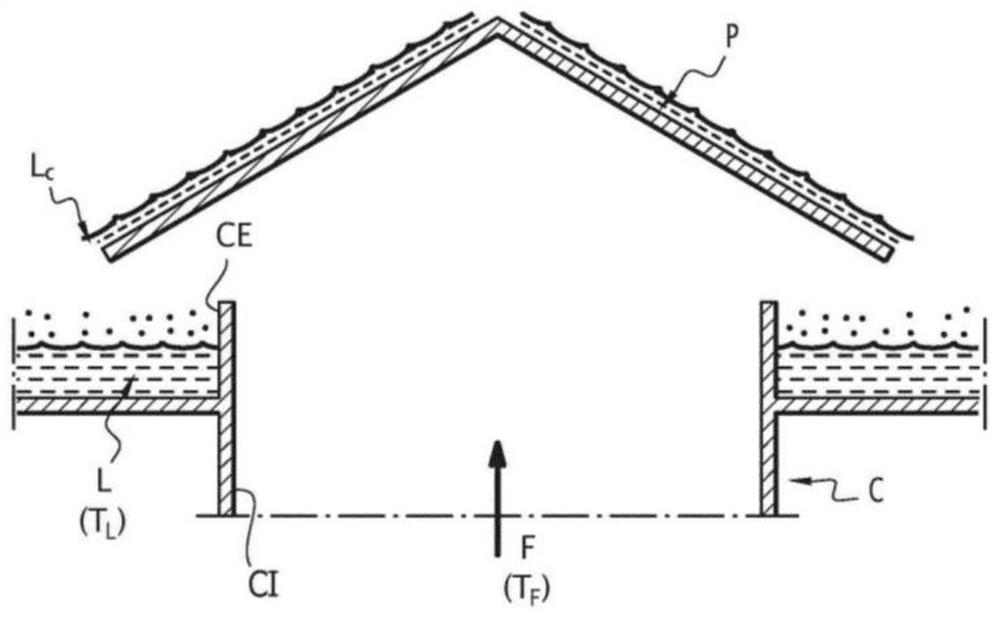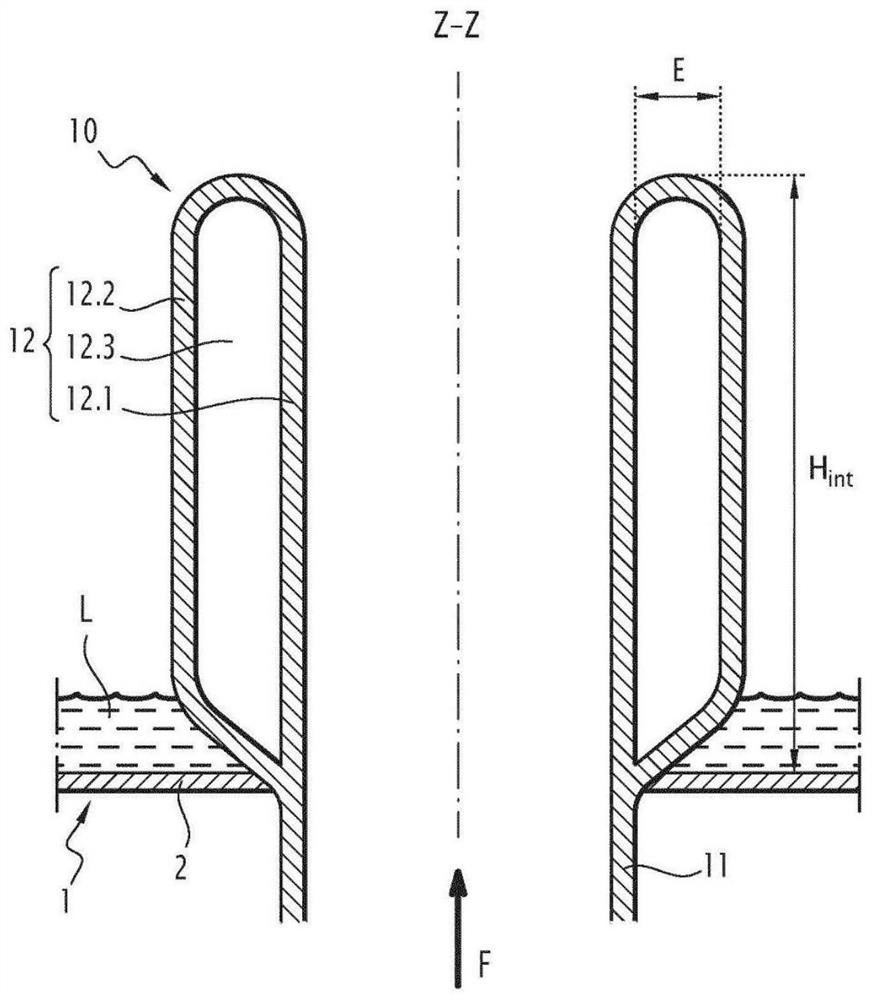Apparatus for conveying exhaust fumes from marine ship engines into scrubbers
A technology for scrubbers and ships, used in exhaust devices, mufflers, exhaust treatment, etc., and can solve problems such as less heat
- Summary
- Abstract
- Description
- Claims
- Application Information
AI Technical Summary
Problems solved by technology
Method used
Image
Examples
Embodiment Construction
[0039] image 3 Shown is a device for transporting fumes belonging to a treatment facility, which makes it possible to clean the exhaust fumes F of the diesel engines of the diesel engines propelling the marine vessel on board the treatment facility. Smoke F contains especially sulfur oxides, especially sulfur dioxide (SO 2 ). image 3 The device makes it possible to transport the fumes F to the desulfurization scrubber 1, where image 3 Only the bottom wall 2 of the desulfurization scrubber 1 can be seen in the figure.
[0040] The scrubber 1 , the embodiment of which does not limit the invention, is functionally or even structurally similar to the scrubber V previously described with reference to FIG. 1 . The scrubber 1 thus overall assumes the shape of a tower which, during use, extends longitudinally vertically. At its base, the scrubber 1 has a bottom wall 2 from which the peripheral wall of the scrubber extends, ending in an apex: during use, the exhaust fumes F are ...
PUM
 Login to View More
Login to View More Abstract
Description
Claims
Application Information
 Login to View More
Login to View More - R&D
- Intellectual Property
- Life Sciences
- Materials
- Tech Scout
- Unparalleled Data Quality
- Higher Quality Content
- 60% Fewer Hallucinations
Browse by: Latest US Patents, China's latest patents, Technical Efficacy Thesaurus, Application Domain, Technology Topic, Popular Technical Reports.
© 2025 PatSnap. All rights reserved.Legal|Privacy policy|Modern Slavery Act Transparency Statement|Sitemap|About US| Contact US: help@patsnap.com



